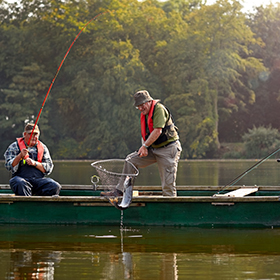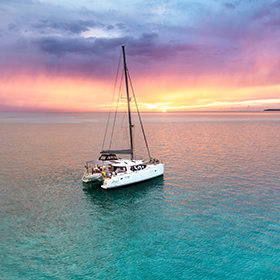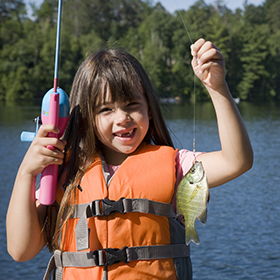Guidelines of ice fishing basics, including gear required, to catch freshwater fish through the ice. Gear to use, safety considerations, baits or lures to try.
Do you want to try ice fishing this winter, but don’t know where to start? Learn the ice fishing basics and experience the fun of catching species like yellow perch, bluegill, crappie, walleye, and largemouth bass through the ice.
Consider the fact that freshwater fish must continue to feed throughout the winter months, and certain types of forage (such as crawfish and insects) are in shorter supply. Fish are often more willing to feed on a conveniently presented bait or lure that doesn’t require much energy for them to pursue. Check out these basic ice fishing setup guidelines to help you experience the fun of fishing all year-long.
1. Get Your Fishing License Before Ice Fishing
First, make sure you purchase a fishing license and check the fishing regulations for the state you will be ice fishing in. One of the basics of ice fishing (and any other type of fishing) is knowing that a valid fishing license is required to fish. Many waterways have regulations that are specific to that body of water. Every angler is responsible for buying a license and looking up the local fishing regulations before a fishing trip. The regulations will inform you about size limits, bag limits (number of fish you can take home for dinner), and gear restrictions that may apply.
2. Choose a Method of Ice Fishing
There are two types of basic ice fishing gear and associated methods you can use to catch fish through the ice. The first is by using ice fishing devices called tip-ups. Tip ups consist of a spool with fishing line, a trigger mechanism, and a flag that pops up when a fish pulls line from the spool. The second is by using a specialized ice fishing rod that is designed help you detect light bites and catch fish through a hole in the ice. Most ice anglers set out tip-ups around an area first. Once they get multiple bites in a location, they remove the tip-ups and start using an ice fishing rod instead. If you are just getting started, a set of tip-ups should be one of your first investments when it comes to ice fishing basic equipment.
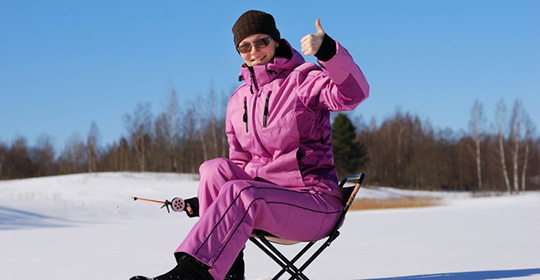
3. When and Where to Drill an Ice Fishing Hole
Learn ice fishing basics that apply to ice thickness safety, along with when and how to make a hole through the ice. Once the ice is approximately four inches thick, you can drill an ice fishing hole (be sure to read up on ice fishing safety first). The easiest way to make a hole through the ice is with a battery or gas-powered ice auger. A power ice auger is on most basic ice fishing equipment lists because it’s the best tool to use when the ice is over 12 inches thick. You can also use a manual ice auger, an ice chisel, or an ice saw, but these tools are best used when ice is between 5 and 12 inches thick. Once you have a tool to make a hole through the ice, pick a spot that’s at least five to six feet away from other anglers’ holes or ice fishing shelters.
4. Basic Ice Fishing Gear and Tackle
Other items to include on your list of basic ice fishing tackle and gear should be an ice fishing rod and reel, live bait or artificial lures, ice scoop or skimmer for removing ice from your fishing hole, extra fishing line, extra fishing hooks, an ice fishing suit or bibs, ice cleats or spikes to prevent slipping, and a first aid kit. When selecting a rod for ice fishing, it’s helpful to know that ultra-fast and fast-action graphite rods have the sensitivity required to detect light bites.
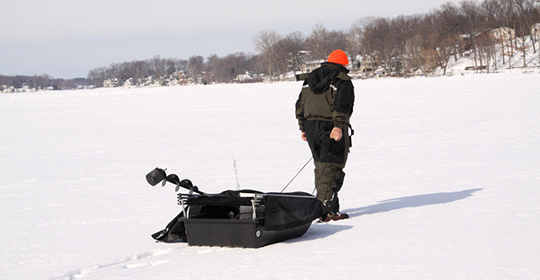
5. Artificial Lures and Natural Baits for Beginners
When it comes to the question of which lures or baits are basic for ice fishing, the most effective artificial lures to use are jigging spoons, while wax worms are generally one of the best natural ice fishing baits for panfish. When planning an ice fishing trip, stop into a local bait and tackle shop to ask about which jigging spoon colors or sizes to use and inquire about which natural baits have been producing the most catches for anglers fishing through the ice with bait.
Now that you know about ice fishing basic gear requirements to get started, make plans to take advantage of the cold weather by catching fish through the ice with your friends or family. Just because its winter doesn’t mean you have to stop fishing!


